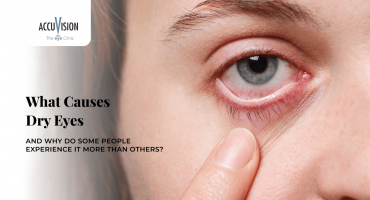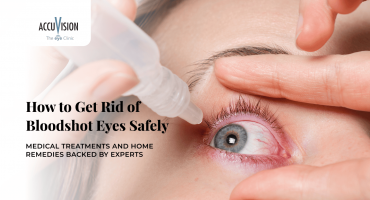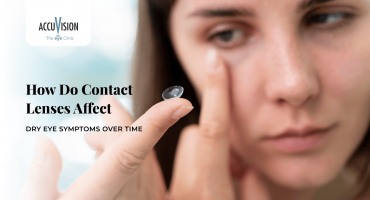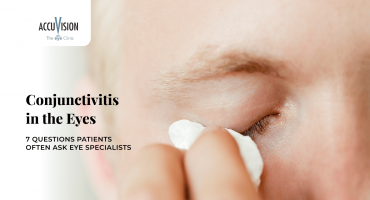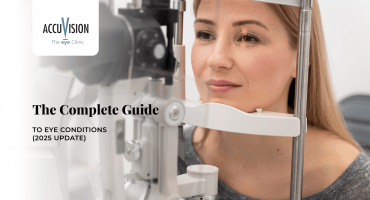- Why Early Detection Matters?
- Glaucoma: The Silent Vision Thief
- Keratoconus: When the Cornea Thins
- Cataracts: Clouding of the Eye’s Lens
- Other Common Eye Diseases You Should Know
- How to Prevent Common Vision Problems
- Conclusion
- Frequently asked questions
Common Eye Conditions Explained: Glaucoma, Keratoconus, Cataracts, and More
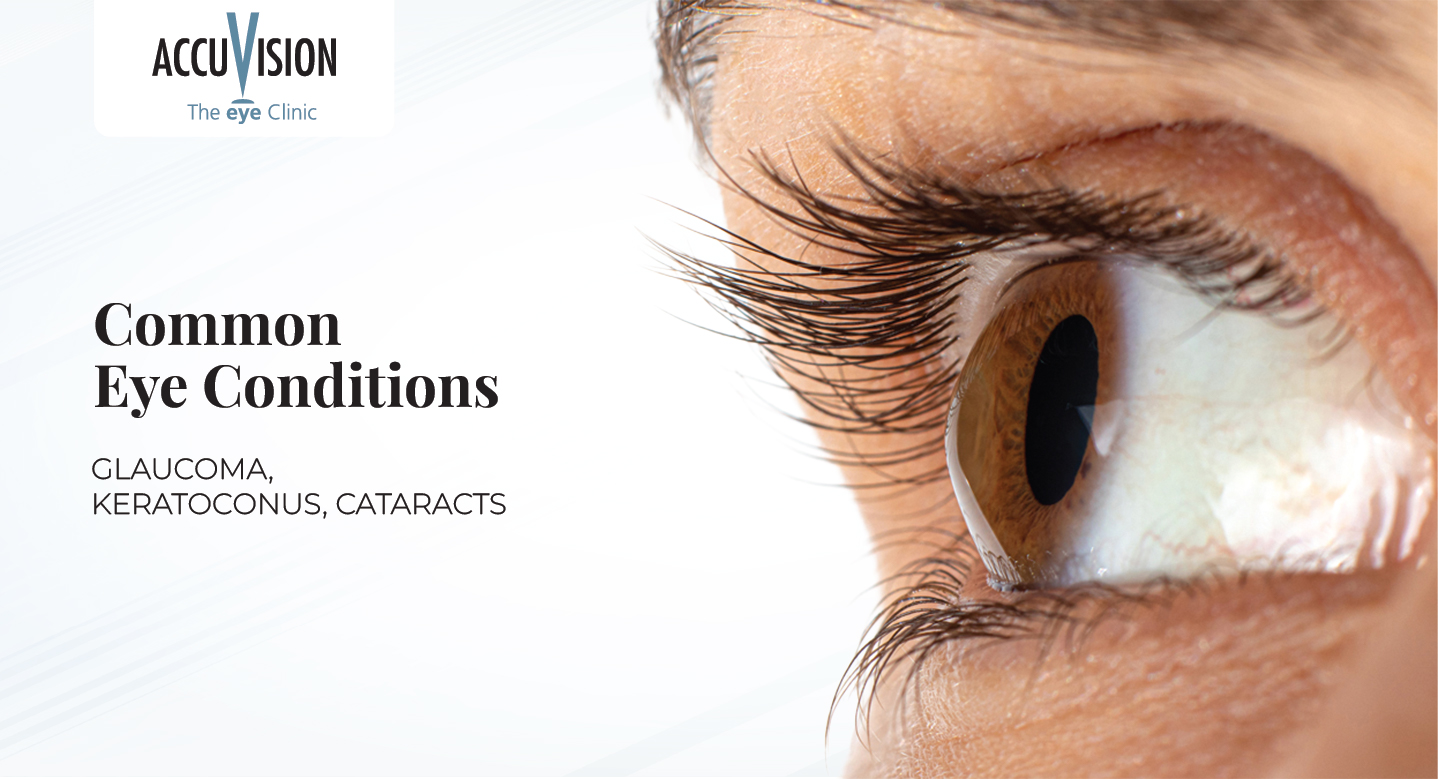
Eye health is essential for independence and quality of life. Many common eye diseases get worse over time and can cause vision loss if they are not found and treated early. This blog covers common eye conditions such as glaucoma, keratoconus, and cataracts. It describes their early warning signs, treatment options, and ways to lower the risk of developing them. Being aware of what to watch for can help you seek the right care early and keep your vision healthy.
Why Early Detection Matters?
Because many eye conditions have few early symptoms, regular eye tests with comprehensive evaluation are essential for maintaining lifelong eye health. Early detection through regular eye exams allows people to plan treatment before vision loss affects daily activities. The impact of delayed diagnosis can be severe – conditions like keratoconus and glaucoma can cause irreversible vision damage if not caught early. Understanding how to prevent and detect common vision problems begins with consistent monitoring and professional care. With timely diagnosis and proper treatment, today’s advanced therapies make severe vision loss from many conditions uncommon. Preventive measures such as regular exams help maintain lifelong eye health and can significantly reduce the risk of vision problems.
Glaucoma: The Silent Vision Thief
What is Glaucoma?
Glaucoma is a group of eye disorders that damage the optic nerve, usually due to increased pressure inside the eye (intraocular pressure, or IOP). There are several types of glaucoma:
- Primary open-angle glaucoma (POAG) is the most common form. It’s characterized by obstruction or dysfunction of the trabecular meshwork, even though the drainage angle (between cornea and iris) remains open. The resulting resistance to outflow causes a gradual rise in intraocular pressure (IOP) and optic nerve damage over time.
- Angle-closure (or closed-angle) glaucoma occurs when the anterior chamber angle becomes narrow or closed, typically due to forward displacement of the iris, blocking aqueous drainage. This leads to a sudden and dramatic rise in IOP, necessitating immediate care.
Early Signs of Glaucoma in Adults
Glaucoma is often referred to as the “silent thief of sight” and affects approximately 80 million people worldwide, many of whom are unaware they have the condition when in the early stages. Because the disease advances quietly, it is often detected only when side vision starts to deteriorate. In its early stages, glaucoma does not have any noticeable symptoms. As it progresses, you might experience gradual loss of peripheral vision.
Risk factors include:
- High eye pressure (IOP)
- Thin cornea
- Use of steroids
- Family history of Glaucoma
- Certain other eye or general health conditions
This condition ranks as the second most common cause of blindness worldwide, but timely diagnosis and proper treatment can help prevent significant vision loss.
Treatment Options
- Medicated eye drops to reduce IOP
- Laser therapy to improve fluid drainage
- Surgery to create new drainage channels
- Surgery for early lens removal where angle closure risk exists in certain patients
- Consistent follow-up is necessary for glaucoma management.
Difference Between Cataracts and Glaucoma
- Cataracts: Clouding of the lens causing blurred vision and are reversible with surgery
- Glaucoma: Damages the optic nerve and can result in permanent vision loss
Keratoconus: When the Cornea Thins
What is Keratoconus and How is it Treated
Keratoconus is a progressive disorder of the eye in which the cornea slowly thins and bulges outward, forming a cone-shaped structure, without involving any inflammation. It is a corneal disorder that can cause:
- Blurred vision
- Glare
- Frequent prescription changes
- Difficulty driving at night
- Eye strain and headaches
It typically begins in adolescence or early adulthood and progresses over the years.
Symptoms
Typical symptoms include blurry vision, heightened sensitivity to light, and the need for frequent changes in prescription lenses, particularly astigmatism.
The exact cause of keratoconus is unknown, but genetic and environmental factors contribute.
Risk factors include:
- Genetics: Family history increases risk
- Eye rubbing: Associated with allergies or atopic disease – a major risk factor
- Medical conditions: It can be more prevalent in people with certain conditions such as Down syndrome
Best Treatment Options for Keratoconus UK
Early detection uses corneal topography, OCT, keratometry and slit-lamp examination. Treatments vary depending on severity:
- Glasses or soft contact lenses for mild cases
- Rigid gas-permeable and scleral contact lenses are often prescribed to improve vision in people with irregular astigmatism
- Corneal cross-linking (CXL): Uses riboflavin and UV light to strengthen corneal collagen, slowing or halting progression
- Advanced laser procedures: surface treatments such as Topography guided custom reprofiling of the cornea, often combined with CXL
- Intacs (intrastromal corneal ring segments): Biocompatible implants placed within the cornea to flatten its surface and reduce abnormal curvature
- Corneal transplantation: Considered for patients with advanced or worsening corneal disease
Self-care includes: • Avoiding eye rubbing • Using prescribed drops • Wearing sunglasses • Maintaining a nutrient-rich diet • Attending regular check-ups
Cataracts: Clouding of the Eye’s Lens
A cataract is the clouding or loss of clarity in the lens of the eye, which gradually affects vision by scattering or obstructing the light that enters the eye. Cataracts are the leading cause of reversible vision loss globally, with timely surgical intervention often restoring sight.
Symptoms
Symptoms progress slowly and often include:
- Blurred vision
- Glare
- Difficulty reading
- Changes in colour perception
- Difficulty seeing at night
- Sensitivity to light
- Needing brighter light for reading
- Frequent prescription changes
Risk Factors and Treatment
Risk factors include:
- Aging
- Smoking
- Ultraviolet light exposure
- Diabetes
- Prolonged use of corticosteroids
- Prior eye inflammation or trauma
Cataracts cannot be reversed with medication; the definitive treatment is surgical removal of the cloudy lens, replaced with an artificial intraocular lens. Today’s cataract surgery is highly safe and usually enables patients to regain clear vision.
Reinforcing the difference between cataracts and glaucoma:
- Cataracts: Usually causes blurred vision but no pain
- Glaucoma: May be painless or painful depending on the type
Any change in quality of vision should always prompt a visit to your specialist, as often clinical examination and tests are the only way to identify the cause of any symptoms and direct onward care.
Other Common Eye Diseases You Should Know
Gaining insight into common eye disorders and their symptoms goes beyond just these three major conditions:
Dry Eye Syndrome
A multifactorial disorder where the tear film loses stability, resulting in dryness and inflammation. Common symptoms include eye irritation such as burning or stinging, a gritty feeling, blurred vision, and sensitivity to wind or environmental changes. Management includes artificial tears, anti-inflammatory drops, and lifestyle modifications.
Diabetic Retinopathy:
Develops when long-term high blood sugar harms the small blood vessels in the retina, leading to leakage, swelling, and scar tissue formation. For individuals with diabetes, routine eye examinations are essential to identify retinal changes early and prevent vision loss.
Age-related Macular Degeneration (AMD):
Degeneration of the macula (part of the retina at the back of the eye) causes loss of central vision. There are dry and wet forms; risk factors include age, smoking, family history and cardiovascular disease. Treatments include anti-VEGF injections for wet AMD and lifestyle changes to slow dry AMD progression.
Conjunctivitis (Pink Eye):
Inflammation of the conjunctiva caused by infections, allergies or irritants, with treatment depending on the underlying cause.
How to Prevent Common Vision Problems
Learning how to prevent common vision problems is essential for maintaining lifelong eye health. Prevention includes regular eye tests, protecting eyes from UV rays, maintaining a balanced diet, not smoking, controlling chronic conditions like diabetes and hypertension, and managing screen time.
Key Prevention Strategies:
- Have regular eye examinations for early detection
- Wear UV-protective sunglasses to prevent cataracts and other UV-related damage
- Eat a balanced diet rich in antioxidants, vitamins A, C, E, and nutrients like Omega-3
- Control medical conditions like diabetes and hypertension
- Avoid smoking and limit screen time
- For keratoconus prevention, avoid rubbing your eyes and manage allergies effectively
- Stay hydrated and maintain overall health
In glaucoma, identifying the condition early and following prescribed treatment are key to protecting vision. For cataracts, wear UV-blocking sunglasses and stop smoking. People with diabetes should monitor blood sugar and have annual retinal screenings. These preventive measures significantly reduce the risk of vision problems.
Conclusion
Eye conditions like glaucoma, keratoconus, and cataracts can cause significant vision problems if not identified early. Early detection and timely treatment are crucial for preserving your vision and quality of life. Understanding symptoms, risk factors and treatment options empowers you to seek care early. Don’t wait for symptoms to appear – many serious eye conditions progress silently.
Take action today: schedule regular comprehensive eye examinations with a trusted Ophthalmologist. Your vision is irreplaceable, and with proper care and monitoring, most vision problems can be prevented or effectively managed. Protect your sight for a lifetime of clear, healthy vision.
Frequently asked questions
Q1: What are early signs of glaucoma in adults?
In its early stages, glaucoma often has no noticeable symptoms. As it progresses, you might experience gradual loss of peripheral vision. Acute angle-closure glaucoma may lead to eye pain, blurred vision, coloured halos around lights, and nausea. Regular eye tests are the only way to detect glaucoma early.
Q2: What is keratoconus and how is it treated?
Keratoconus is a degenerative eye condition in which the cornea gradually thins and protrudes outward into a cone-like shape, resulting in distorted vision and irregular astigmatism. Treatment may involve spectacles, custom-designed contact lenses, advanced surface laser, corneal cross-linking, or, in advanced stages, corneal transplant surgery.
Q3: What is the difference between cataracts and glaucoma?
Cataracts are a clouding of the lens causing blurred vision and glare. They are usually reversible with surgery. Glaucoma is a condition in which the optic nerve becomes damaged, often due to elevated eye pressure, and this can result in permanent vision loss. Cataracts often cause blurred vision but do not typically cause pain; glaucoma may be painless or painful depending on the type.
Q4: What are the best treatment options for keratoconus in the UK?
In the initial stages, vision can often be corrected with spectacles or contact lenses. Corneal cross‑linking is recommended to halt progression. In moderate to severe cases, scleral lenses, Intacs and sometimes corneal transplants are considered. Consult a specialist clinic to discuss options.
Q5: How can I prevent common vision problems?
Have regular eye examinations, wear UV‑protective sunglasses, eat a balanced diet rich in antioxidants, control medical conditions like diabetes and hypertension, avoid smoking and manage screen time. For keratoconus, avoid rubbing your eyes and manage allergies.
References
- Sirisha Senthil, Seth, P., Das, A. and Chandrasekar Garudadri (2023). Prevalence of glaucoma types, clinical profile and disease severity at presentation: Tertiary Institute based cross-sectional study from South India. Indian Journal of Ophthalmology, 71(10), pp.3305–3312. doi:https://doi.org/10.4103/ijo.ijo_3305_22.
- Lapp, T., Wacker, K., Heinz, C., Maier, P., Eberwein, P., & Reinhard, T. (2023). Cataract surgery—indications, techniques, and intraocular lens selection. Deutsches Arzteblatt International. https://doi.org/10.3238/arztebl.m2023.0028
- Mahabadi, N., Zeppieri, M. & Tripathy, K. (2024) Open Angle Glaucoma. In: StatPearls [Internet]. Treasure Island, FL: StatPearls Publishing. Available at: https://www.ncbi.nlm.nih.gov/books/NBK441887 (Accessed: 1 September 2025).
- Dave, S.D., Zeppieri, M. & Meyer, J.J. (2024) Chronic Closed Angle Glaucoma. In: StatPearls [Internet]. Treasure Island, FL: StatPearls Publishing. Available at: https://www.ncbi.nlm.nih.gov/books/NBK559098 (Accessed: 1 September 2025).



